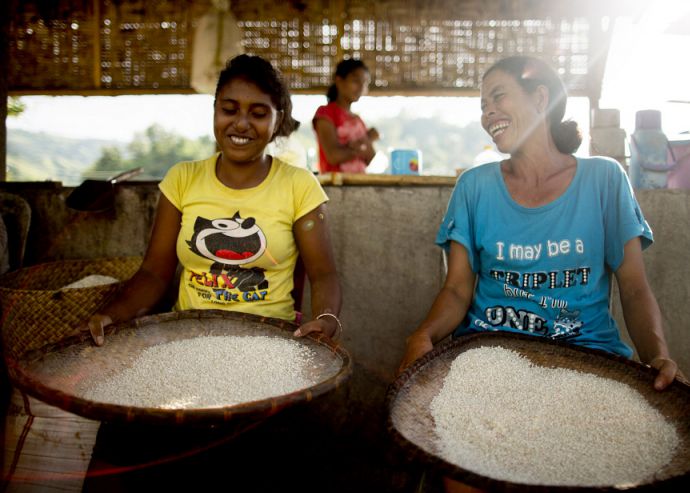By: Mike Ives
Send to a friend
The details you provide on this page will not be used to send unsolicited email, and will not be sold to a 3rd party. See privacy policy.
Eating fortified rice increases the risk of hookworm infections, a study in Cambodian schoolchildren shows, suggesting that the rice’s added nutrients inadvertently help parasites grow.
The study’s authors warn that the overall health benefits of fortified rice should be weighed against possible health risks.
The researchers analysed faecal samples from about 2,000 children at 16 primary schools that participate in a UN World Food Programme initiative that provides daily meals to schoolchildren. The schools were randomly split into four groups: children in one group ate plain, ‘placebo’ rice, while the other groups received three different types of rice fortified with micronutrients including iron, zinc, folate and different vitamins.
“There is absolutely an important role to play for fortified rice, but it should be tailor-made to the local situation.”
Frank Wieringa, French Research Institute for Development
After three and seven months, the researchers measured levels of intestinal parasite infections. “Micronutrient-fortified rice significantly increased risk of new hookworm infection,” the team writes in a paper published in PLOS One last month (6 January).
Therefore, “the merits of micronutrient repletion should be weighed carefully against its possible risks”, they say.
“There is absolutely an important role to play for fortified rice, but it should be tailor-made to the local situation,” says Frank Wieringa, a coauthor of the study working at the French Research Institute for Development and based in Phnom Penh, the Cambodian capital.
“For example, in Cambodia, where we do not have a lot of iron deficiency, one would wonder whether you should have to add iron at all to the rice,” Wieringa says. In contrast, it makes sense to fortify rice with zinc, as zinc deficiency levels are high in Cambodia, he says.
Pattanee Winichagoon, a nutrition researcher at Mahidol University in Thailand, says more research is needed to verify the study’s findings, as parasite infections are more or less common depending on the season.
But, she says, the study shows that the current approach — giving children a higher dose of micronutrients when gut infections are common — “may not hold”. The paper rightly emphasises the need for improved hygiene and sanitation “for nutritional intervention to be effective and produce desirable nutritional and health benefits”, she adds.
Wieringa says that the logistics of distributing fortified rice can be complex in rural Asia compared with other parts of the world. In Costa Rica, for example, it is easy to provide fortified rice on a comprehensive scale because the country imports all its rice, he explains. But in Asia, that is “more difficult” because every small village grows its own.
References
Brechje de Gier and others Micronutrient-fortified rice can increase hookworm infection risk: a cluster randomized trial (PLOS One, 6 January 2016)














